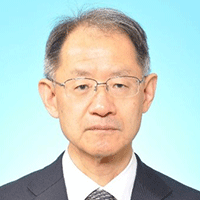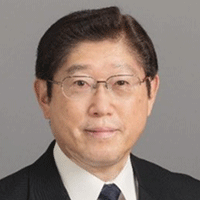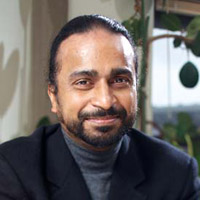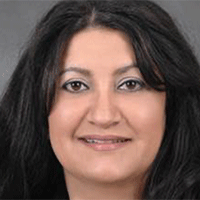
Professor Mamoru Mitsuishi
Professor Emeritus, University of Tokyo
Vice President, NIAD-QE: National Institution for Academic Degrees and Quality Enhancement of Higher Education in Japan
Keynote Title: Engineering Knowledge for Next-Generation Surgical Support Systems which Transcend Scale, Distance, and Time
Abstract: The author's group has been developing microsurgical systems for neurosurgery, ophthalmology, and pediatric surgery. These are systems that transcend the size barrier. In neurosurgery, I will discuss the level of autonomy as well as the development of small diameter forceps and collision avoidance. In ophthalmology, I will describe methods for two characteristic and difficult tasks: Inner limiting membrane (ILM) peeling and cannulation of needles into microvessels, where, for example, machine learning is used. Analysis in the micro scale has also been performed in osteotomies in joint replacement surgery to control the increase in bone resection temperature and reduce resection force so as not to damage the bone. Here, knowledge of metal and brittle materials cutting is helpful. Furthermore, remote surgical support systems transcend the limitations of distance, but there is the problem of time delay, which is crucial to solve. The relationship between time delay and the time required for positioning, and the relationship between time delay and multiple types of information presentation are discussed. Additionally, the introduction of AI is to utilize knowledge beyond time, and a system utilizing this knowledge in surgery will be constructed. This will enable the transfer of technology not only in the medical field but also in various other fields, as well as the simultaneous transfer of technology overcoming distance and time. The ELSI of AI-based systems will also be described.
Biography: Professor Mamoru Mitsuishi graduated from the University of Tokyo in 1979 with a Bachelor of Science in Physics. Following this, he earned a second bachelor's degree in Mechanical Engineering in 1981. He received his Master's and doctorate degrees in 1983 and 1986, respectively from the University of Tokyo, after which he joined the university's School of Engineering as an academic staff. He became a professor in 1999. Professor Mitsuishi was the Dean of the School of Engineering from 2014 to 2017 and between 2017 and 2021, he was appointed as an Executive Director and Vice President of the University of Tokyo.
Professor Mitsuishi retired from the University of Tokyo at the end of March 2022 and was awarded the title of Professor Emeritus in June. He is now working as a Vice President at NIAD-QE: National Institution for Academic Degrees and Quality Enhancement of Higher Education, as well as two private universities, Waseda and Teikyo Universities as a Guest Senior Researcher (Guest Professor) and a Specially Appointed Professor, respectively.
He was elected as the President of Science Council of Japan in 2023.
His areas of interest are biomedical robotics, and manufacturing systems. He is a member of various internationally renowned societies, such as the International Academy for Production Engineering (CIRP), where he was its president from 2019 to 2021, and is an Honorary Fellow, and the IEEE Robotics and Automation Society.

Dr. Hideki Aoyama
Professor Emeritus
Keio University
Keynote Title: "Novel Generation Method of Cutting Tool Paths for High Speed and Accuracy Machining of Curved Surfaces" and "Automated High Accuracy and Quality Modeling System Using 3D-Printer (DED)"
Abstract: In this speech, two topics are given; one is on a novel generation method of cutting tool paths which realize high speed and accuracy machining of curved surfaces, and the other is on an automated modeling system using a metal 3D-Printer: Directed Energy Deposition (DED).
Cutting tool paths for curved surfaces are approximated by line segments. The lengths of the line segments are set to be as long as possible while still satisfying the machining tolerance. On the other hand, a novel generation method of cutting tool paths which have the segment lengths as short as possible was originally developed by considering NC-controller characteristics. The new tool paths realize high speed and high accuracy machining of curved surfaces.
In the processes of DED, a type of 3D printing, the distance between the melt pool and the powder injection nozzle: the standoff distance (SOD), must be unstable due to many parameters to be controlled. The unstable SOD makes model-shape inaccurate, model-quality uneven, and sometime printing impossible. A unique automated DED system, which can model a 3D shape by just giving the CAD data of a required shape, is developed by an in-process SOD measurement system and a real-time generation system of printing paths keeping the optimum SOD. The developed DED system enables one to high accuracy and quality modeling.
Biography: Dr. Hideki Aoyama is a professor emeritus at Keio University. He served as the president of the Japan Society for Die and Mould technology (JSDMT) in 2016 and 2017. He was the chairman of the International Committee for Abrasive Technology (ICAT) in 2016 and 2017. He also served as a vice president of the Japan Society for Precision Engineering (JSPE) in 2018 and 2019. In research activity, he developed digital design methodology that automatically create aesthetic design based on mathematical models of natural phenomena. He also developed many automation systems including manufacturing inspection with AI, process planning and NC program generation for multi-axis machine tools, and femtosecond laser processing simulation/CAM.

Santosh Devasia
Professor and Minoru Taya Endowed Chair
Mechanical Engineering
University of Washington
Keynote Title: Inverse Dynamics for Cohesive Decentralized Robotic Networks
Abstract: How a decentralized network gets to the goal (a consensus value) can be as important as reaching the consensus value. While current network theories seek to enable fast synchronization (fast convergence to the steady state), maintaining cohesion, i.e., synchronization, during the transition between consensus values or during tracking of a time varying goal, remains challenging and has not been addressed. Maintaining cohesion is important, e.g., to maintain similar inter-vehicle spacing in connected unmanned vehicles, to avoid damage due to large deformations when transporting flexible objects with decentralized robotic networks, and to maintain formation of engineered swarms such as satellites.
The challenge to maintain cohesion between agents arises because information about the desired response (such as the desired orientation or speed of the agents) might be available to only a few agents in a decentralized framework. The desired-response information needs to be propagated through the network to other agents, which results in response-time delays between agents that are "close to" the information source and those that are "farther away."
The talk will start with a centralized approach where all agents have access to the time varying goal and the use of inversion theory to enable precision tracking for nonlinear heterogeneous agents resulting in an ideal cohesive network. Then, we develop a decentralized implementation of this ideal centralized approach using a delayed self-reinforcement (DSR) approach, where each individual agent augments its neighbor-based information update using its previously available updates, to improve cohesiveness of the network response during transitions. The advantages of the proposed DSR approach are that it only requires already-available information from a given network to improve the cohesion and does not require network-connectivity modifications (which might not be always feasible) nor increases in the system's overall response speed (which can require larger input). Results are presented that show substantial improvement in cohesion with DSR.
Biography: Santosh Devasia received the B.Tech. (Hons) from the Indian Institute of Technology, Kharagpur, India, in 1988, and the M.S. and Ph.D. degrees in Mechanical Engineering (ME) from the University of California at Santa Barbara in 1990 and 1993 respectively. He is the Minoru Taya Endowed Chair from 2018-2024 at UW, Seattle. He joined the faculty of the UW Mechanical Engineering (ME) Department in 2000 after teaching from 1994 to 2000 in the ME Department at the University of Utah, Salt Lake City. He is a fellow of ASME and IEEE. His current research interests include control of multi-agent systems and precision human-machine systems.
Additional details of current efforts can be found here.

Tanni Sisco
Technical Fellow
The Boeing Company
Keynote Title: Innovative and Flexible Automated Factories
Abstract: Strategic approach to drive quality, safety, efficiency, improve user experience and deliver value to the industry through innovative applications and design space expansion of advanced automation and sustainable and repeatable processes is a must.
Flexible collaborative human / machine automation is the key to many future high rate factories where parallel work can take place safely with the highest structural integrity, using advanced automated processes and inspection technologies.
Additionally, as future airplanes are getting smaller, lighter, and better fuel efficient, more Design For Manufacturing (DFM) along with advanced portable or automated tools, One Sided Fasteners, and simplified efficient full OUA processes are needed to minimize confined space work and enable smaller wing box design for hybrid composite/metal airplanes.
Innovation and new quality business models are the essential approach for flexible future manufacturing accelerating rate and cycle time safely.